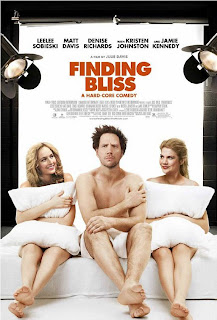Sundance Film Festival 2021: "We're All Going to the World's Fair" lures one into online life with a singular, lonesome mood
Going outside and playing with friends is all but a distant memory now. If you are a kid, the Internet is the backyard or the playground. Why play an old-fashioned board game when one can participate in online communal challenges? Mysterious and unsettling, “We’re All Going to the World’s Fair” reminds of the dark-web version of Bo Burnham’s painfully accurate “Eighth Grade.” While writer-director-editor Jane Schoenbrun’s eye-grabbing feature debut is not some anti-Internet cautionary tale, it rather showcases a singular subset of the World Wide Web, while working through isolation and suicidal ideation. It decidedly comes down to a matter of taste and won't sustain all attention spans, but “We’re All Going to the World’s Fair” lures one into a life lived entirely online with its lonesome, minimalist mood.
As if we are watching a video from a MacBook, a long take introduces the viewer to teenage girl Casey, bravely played by newcomer Anna Cobb. She is the type of withdrawn and antisocial teenager who mutters to herself a lot and will take her dinner plate up to her attic bedroom as soon as her father’s car lights shine through the window. Practically living in her bedroom, Casey decides to post a video of her taking “the World’s Fair Challenge,” the latest horror game, which begins with pricking her finger and smearing the blood on her screen. Once she begins being counseled by a scary-looking avatar that goes by “JLB” over Skype, Casey falls down the rabbit hole of online urban legends.
As much as Casey wants to live in her own “Paranormal Activity” sequel, “We’re All Going to the World’s Fair” does not take the path of least resistance. In fact, be prepared to spend most of the time in Casey’s sanctuary of her bedroom. That could sound deadening, visually and narratively, but filmmaker Jane Schoenbrun uses verisimilitude to persuasively tell this story about finding companionship in the online community of creepypasta lore. The echoey hum of Alex G’s score and music by FRDRK also helps work the viewer into a stew. Apart from having a little knowledge about Momo and the Blue Whale Challenge, it is best to know as little as possible before watching “We’re All Going to the World’s Fair.” A logline about a “role-playing game” and a single still of teen exposed to a black light in a glow-in-the-dark room are all you need to know.
Reminiscent of Elliot Page in his “Juno” days, Anna Cobb feels like her authentic self in playing Casey. This is her feature debut, and yet such an unaffected, unblinking performance of lived-in sensitivity and vulnerability emerges. Though shot before COVID, there are very few locations, outside of a sequence of decaying Everywhere, U.S.A., shot in Upstate New York, and no character ever shares the same space together. The only other performer is Michael J Rogers, captivating as he was playing a hypnotic baddie in “Beyond the Black Rainbow,” but how he figures into Casey’s story doesn’t need to divulged. Perfect for Sundance’s Next section—films that pushes boundaries and defy genre—“We’re All Going to the World’s Fair” is disconcerting but almost shockingly more human than expected. It’s still a film that demands patience and an open mind, but the cumulative effect is truly haunting the longer one sits with it.
Grade: B
“We’re All Going to the World’s Fair” (86 min.) premiered in the Next section at the virtual Sundance Film Festival. Utopia Distribution is releasing the film in select theaters on April 15, 2022.










Comments
Post a Comment